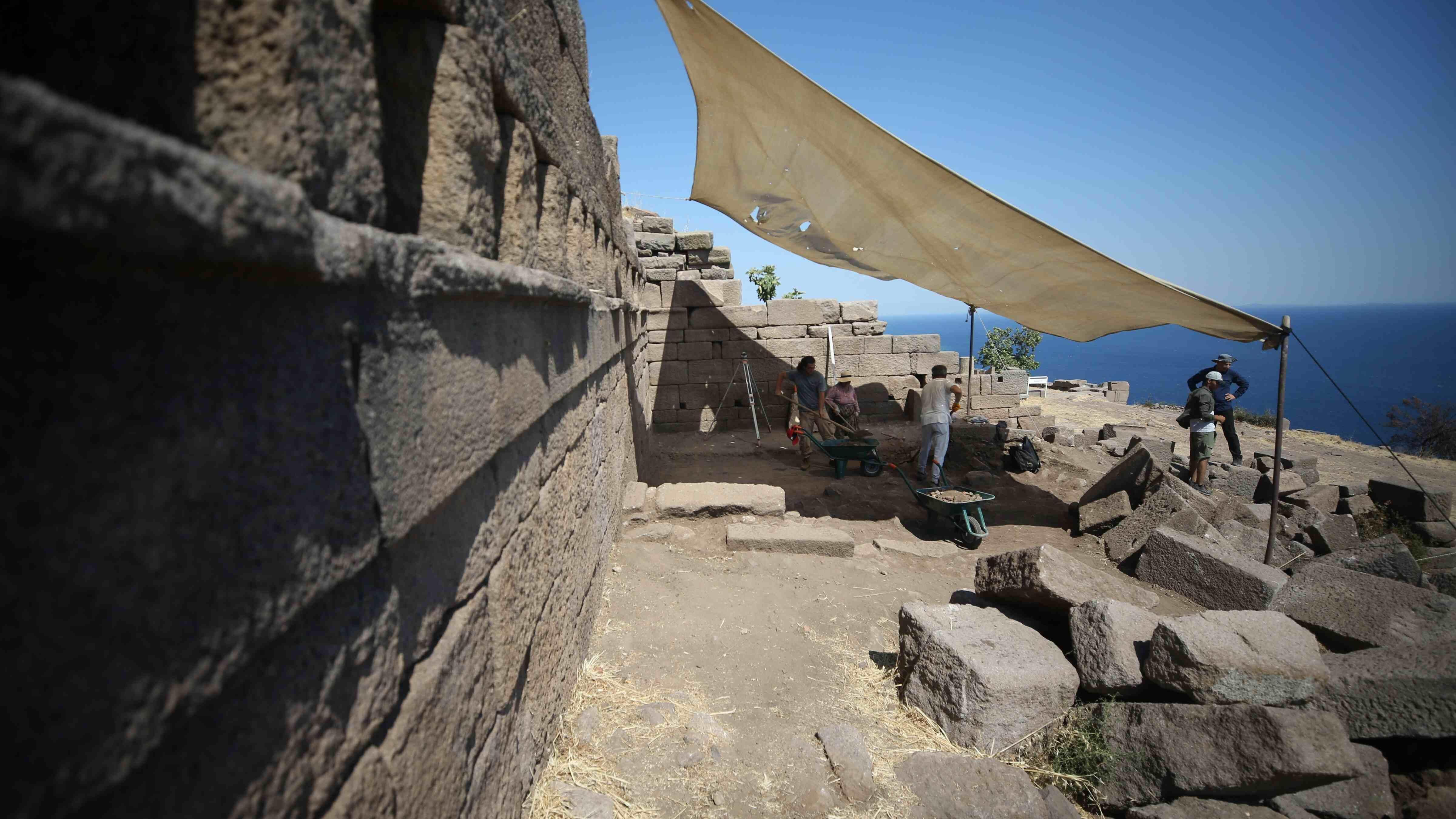
Archaeologists in northwestern Türkiye have begun uncovering a 3,500-year-old, 110-meter stoa (a covered, colonnaded gallery typically found alongside a street or agora in ancient Greek architecture) in the ancient city of Assos, believed to showcase the distinct architectural influence of Hellenistic-era Pergamon royalty.
Scientific excavations in Assos, located in the Behramkale village of the Ayvacık district in the northwestern province of Çanakkale, were first conducted between 1881 and 1883 and have continued uninterrupted since their resumption in 1981.
Founded on the volcanic peak and slopes facing the island of Lesbos, Assos lies along the southern coast of the ancient region of Troas and has hosted various civilizations for centuries.
Its historical remains and natural setting attract thousands of tourists every year.
Now in its 44th season, the archaeological dig in this once-important port city is led by Turkish researchers.
Nurettin Arslan, dean of the Faculty of Humanities and Social Sciences at Çanakkale Onsekiz Mart University and head of the Assos excavation team, told state-run Anadolu Agency that the work is supported by the Culture and Tourism Ministry.
He said excavations are conducted year-round depending on weather conditions.
“This year, we plan to open a section on the eastern edge of a two-story building known as the northern stoa in the agora, which is approximately 110 meters long,” he said.
“What makes this stoa special is that it reflects the architectural style the Pergamon kings introduced during the Hellenistic period to showcase their unique approach,” the official stated.
Arslan added that the area is built on sloped terrain and that ancient architects used specialized techniques to create larger spaces.
“Although we do not know exactly who commissioned it, this two-story, 110-meter-long northern stoa is one of the typical and original structures built by the Pergamon kings in the Hellenistic era,” he said.
The building’s first floor is still fully intact, according to Arslan.
“Because the total length of the building is 110 meters, revealing it entirely could take many years,” he highlighted, noting: “In previous years, we unearthed part of the western section.”
“This year, we aim to expose part of the eastern section next to the council building to help understand the structure’s full scale and layout,” the official emphasized.
2,200-year-old mosaic to be displayed
Among the most important discoveries of 2025, Arslan highlighted a 2,200-year-old mosaic composed of polygonal stones featuring tricolored botanical and geometric motifs.
The mosaic belongs to the Hellenistic period, he said, adding: “If time and resources permit, restoring this mosaic floor and preparing it for public display is one of our top goals for this year.”
He also noted that the area known as the main gate on the eastern side of the city is being excavated and that the surrounding necropolis is part of the research project.
Excavations will also continue at a structure believed to have functioned as a guesthouse during the Byzantine period, and Arslan said they hope to complete work at that site this year.